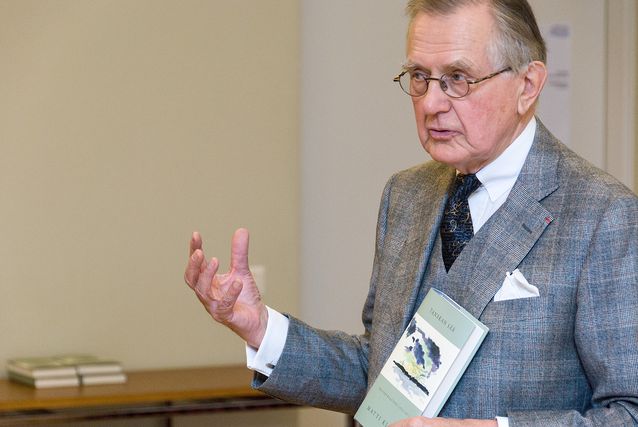Matti Klinge
Born August 31, 1936, Helsinki.
Master of Arts (ultimus), 1959, Licentiate of Philosophy, 1966 and Doctor of Philosophy, 1967 (history), University of Helsinki;
Awarded “best Master of Arts” degree, 1960, riemumaisteri (An honorary master's title awarded to an individual 50 years after the original degree), 2010
Professor Emeritus of History, University of Helsinki, 2002-
Professor of History, University of Helsinki, 1975–2001
Visiting Professor (Finnish Literature and Culture, Sorbonne, Paris), 1970–72
Research fellow, valtion humanistinen toimikunta (present-day Academy of Finland), 1968–75
Docent, Intellectual History and History of Science, 1968-, University of Helsinki
Researcher, the Student Union of the University of Helsinki, 1960–68
Elector for the Helsinki constituency in the Presidential election, 1982 and 1988
Curator, Mannerheim museum, 1966–69
Kuraattori, the student 'nation’ of Southern Finland, 1963–66, Inspehtori, 1976–86, Honorary Member
Member and President of numerous learned foundations and societies as well as Swedish Academies
Publications, research projects and other academic activity
Honours
Honorary Doctor, University of Uppsala, 1989
Honorary Doctor, University of Greifswald, 2006
Commander of the Order of the Lion of Finland, 1980
Commander of the Order of the White Rose of Finland, first class, 2007
Badge of the Presiding Officers (purple ribbon), Student Union of the University of Helsinki, 2001
Commander, Order of the Polar Star of Sweden
L'ordre national de la Légion d'honneur (Chevalier, 1996; Officier, 2015)
Recipient of Dutch, Polish and Russian decorations
Honorary Member, Finnish Historical Society, Finnish Academy of Science and Letters, Swedish Literature Society in Finland and Uppsala division of the Stockholm ‘Nation’
Photo: Laura Malmivaara/Kustannusosakeyhtiö Siltala
Written by Matti Klinge, Kaija Hartikainen (ed.)
Translated by John Calton

